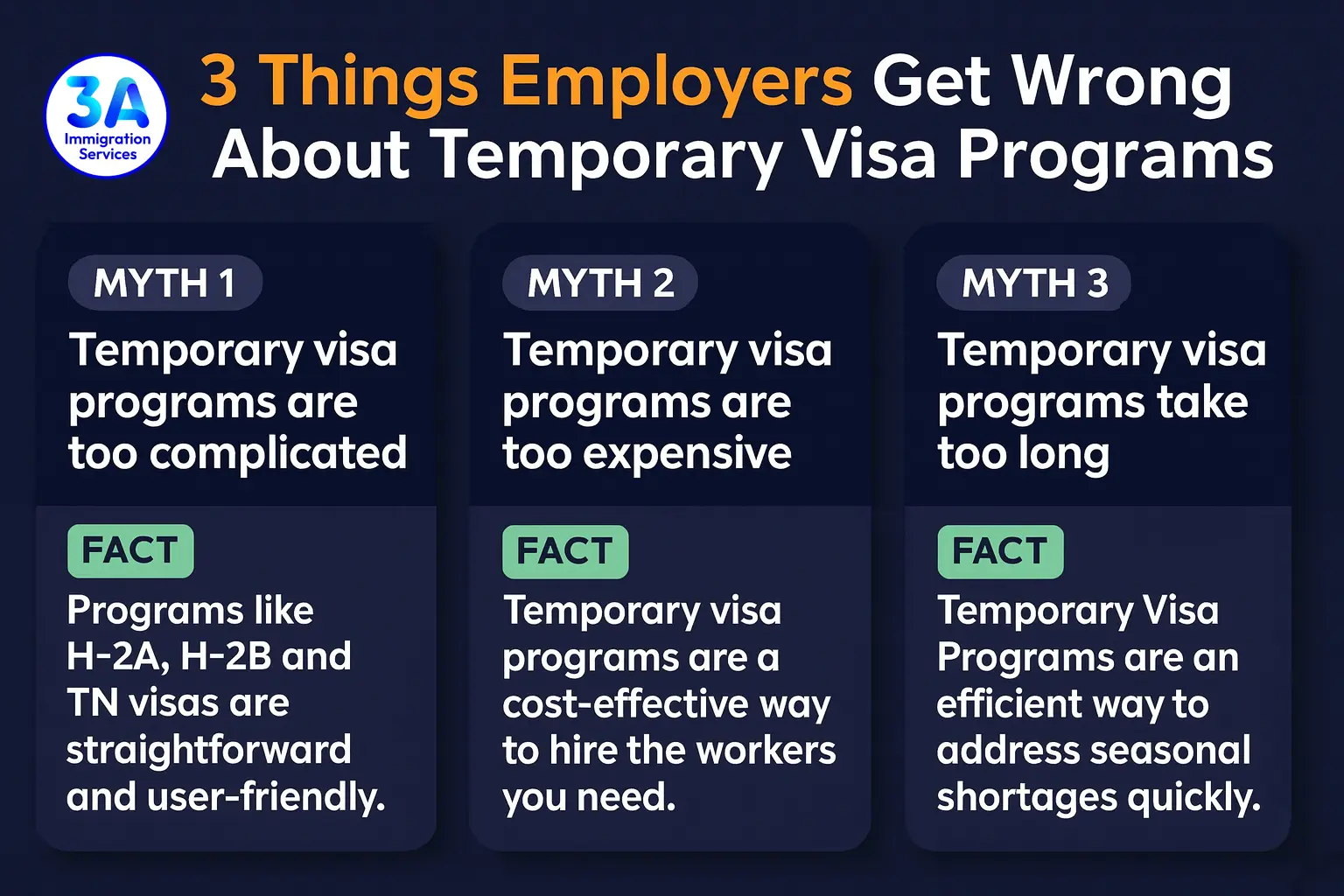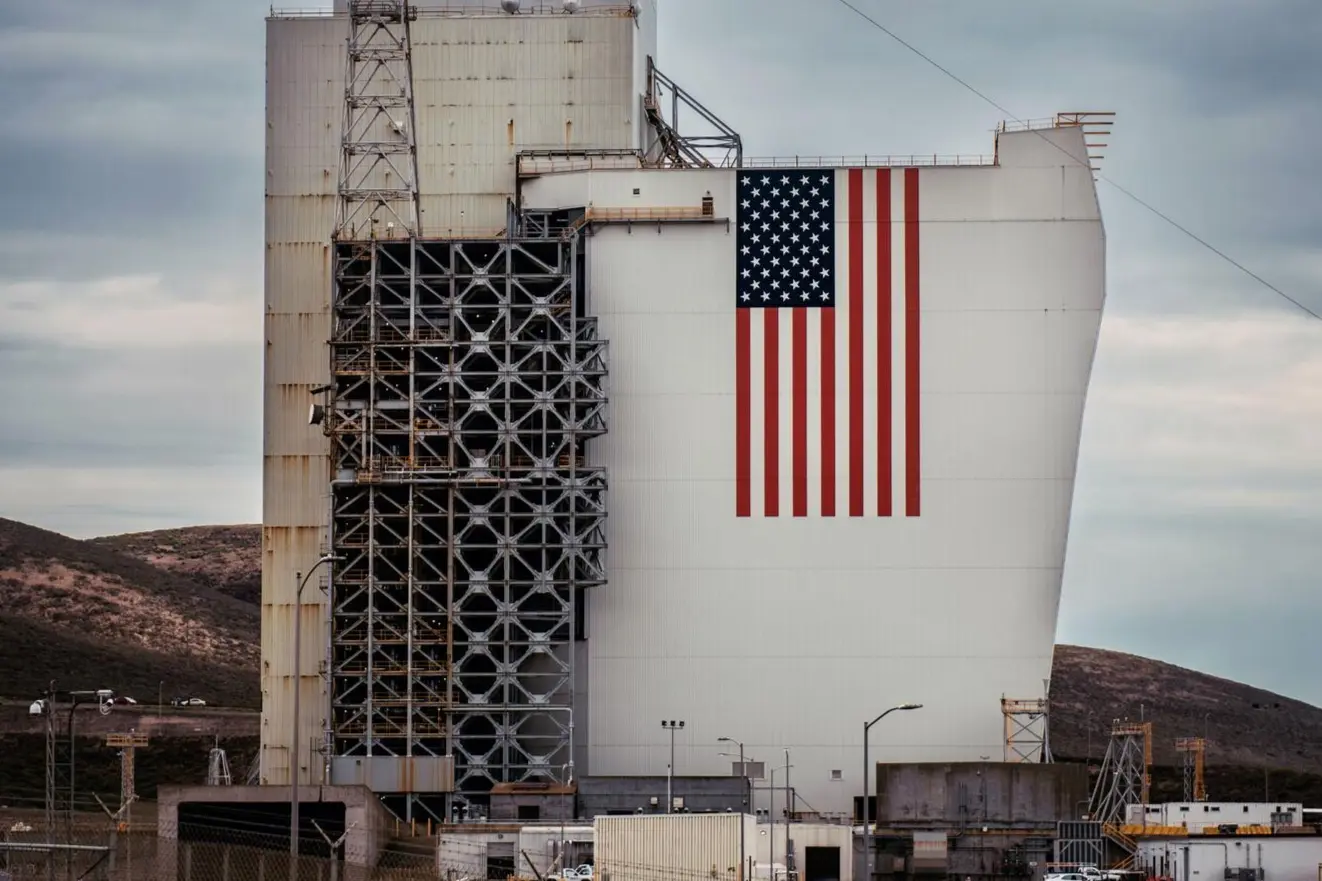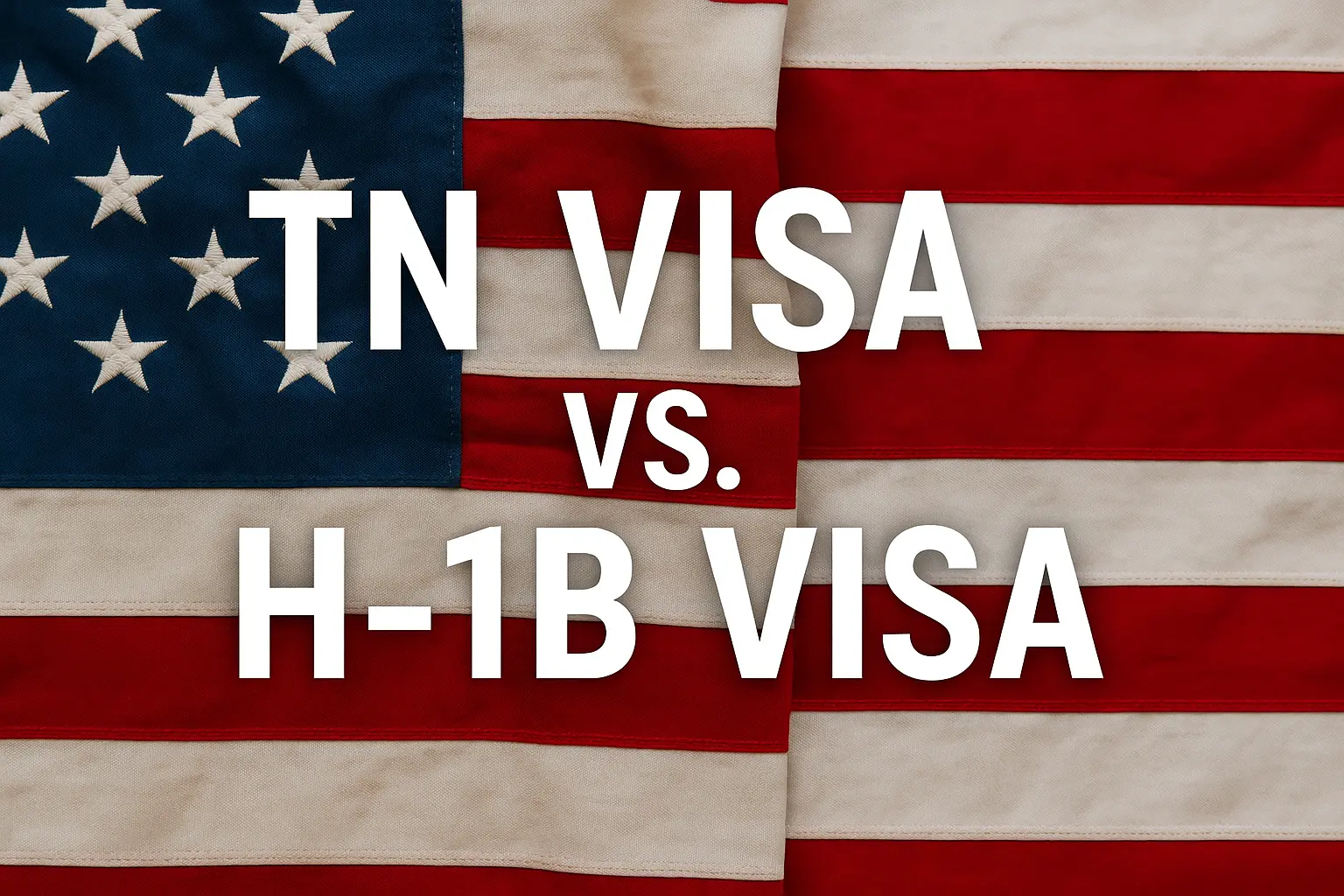3 Things Employers Get Wrong About Temporary Visa Programs
Why Misconceptions About Temporary Visa Programs Hurt Businesses
Imagine a mid-sized manufacturing company in the U.S. struggling with labor shortages. Orders are backlogged, overtime costs are rising, and the HR team is desperate for solutions. A manager suggests hiring international workers through seasonal or specialty visa programs, but the leadership team hesitates. “Aren’t those visas too complicated? Don’t they take years to process? Isn’t it risky to bring in workers from abroad?”
These assumptions are common—but they’re also wrong. Misunderstanding temporary visa programs can cost companies millions in missed opportunities, staffing inefficiencies, and competitive disadvantages. In reality, temporary visa programs—such as the H-2A for agricultural workers, H-2B for seasonal non-agricultural roles, and TN visas for Mexican and Canadian professionals—are designed to provide flexibility and meet employer demand.
This article will bust three of the most persistent myths employers hold about temporary visa programs, using data-driven insights, real-world examples, and actionable steps. By the end, you’ll understand how these programs can help you solve workforce shortages, cut costs, and scale with confidence.
Myth 1: “Temporary Visa Programs Are Too Complicated to Be Worth It”
The Perception of Complexity
Employers often assume that temporary visa programs involve endless paperwork, government red tape, and months of uncertainty. HR directors worry that they don’t have the expertise to navigate legal requirements, while business owners assume they’ll be drowning in compliance issues.
This perception is rooted in half-truths. Yes, the application process involves multiple steps, from filing petitions with the Department of Labor (DOL) to U.S. Citizenship and Immigration Services (USCIS), but complexity doesn’t mean impossibility. In fact, with the right legal and recruiting support, the process is streamlined, predictable, and scalable.
The Reality: Structured, Step-by-Step Programs
Temporary visa programs are designed to be systematic. Let’s break down the H-2B program (non-agricultural seasonal workers) as an example:
-
Labor Certification – Employers show that there aren’t enough U.S. workers available.
-
Recruitment – A recruitment period is required to test the domestic labor market.
-
Petition Filing – Employers submit Form I-129 to USCIS.
-
Consular Processing – Approved workers attend an interview in their home country.
-
Entry and Employment – Workers arrive ready to start on Day 1 of the approved period.
For employers with recurring needs, this process can be built into annual workforce planning. Companies in landscaping, construction, and hospitality use this rhythm year after year.
Data Point: Growing Employer Reliance
According to the U.S. Department of Labor, over 370,000 H-2B visa applications were filed in FY2024, but only 138,000 visas were allocated due to caps. This shows not only demand but also how many employers successfully use the system despite its reputation.
Key Takeaway: The process isn’t prohibitively complex—it’s structured. The real challenge is timing, which can be solved through planning and partnering with experienced immigration professionals.
Myth 2: “Temporary Visa Programs Are Too Expensive”
The Cost Fallacy
Employers often believe that bringing in foreign workers costs significantly more than hiring locally. The perception is driven by worries about legal fees, government filing costs, and travel expenses.
But when compared to the real costs of turnover, overtime, lost productivity, and recruitment failures, visa programs are often the more cost-effective solution.
The Reality: An Investment, Not an Expense
Let’s compare:
-
Turnover Costs – The Society for Human Resource Management (SHRM) estimates that replacing a worker costs 6–9 months of their salary. For a $40,000 worker, that’s up to $30,000 in hidden costs.
-
Overtime Costs – Employers that struggle with seasonal shortages often spend 20–30% more on overtime.
-
Missed Contracts – Some construction and manufacturing companies lose bids because they can’t guarantee staffing.
By contrast:
-
Filing fees for H-2B petitions average $1,500–$2,500 per worker (including government and attorney fees).
-
Workers often stay for 9 months, reliably filling gaps.
-
Retention is higher, since visa holders are tied to the employer for the approved duration.
Data Point: High ROI for Employers
In a study by the National Association of Landscape Professionals, companies reported that hiring through H-2B visas reduced overtime by 35% and increased retention compared to domestic seasonal hires.
Key Takeaway: Temporary visa programs are not a “cost sink.” They’re a workforce investment that stabilizes operations and reduces financial risk.
Myth 3: “Temporary Visa Programs Take Too Long to Deliver Workers”
The Timing Myth
Many employers assume that by the time they get approval, the season will be over. While timing is critical, the reality is that with planning, workers arrive when needed.
The Reality: Timing Is Predictable With Planning
Take the H-2A agricultural visa program. Employers know that harvest season is fixed, so they begin petitions 6–9 months in advance. By the time crops are ready, workers are already on-site.
For TN visas (for Mexican and Canadian professionals), turnaround can be even faster: approvals can happen in a matter of weeks, sometimes days, when documentation is properly prepared.
Data Point: Shorter Than Most Hiring Cycles
According to Glassdoor, the average U.S. hiring process for skilled roles takes 23.8 days. Compare that with TN visa processing at a U.S. port of entry—which can sometimes be completed in under 48 hours once documentation is ready.
Key Takeaway: Temporary visas don’t delay hiring—they synchronize it. Companies that plan proactively can ensure workers arrive precisely when needed.
Beyond the Myths: The Real Benefits of Temporary Visa Programs
Now that we’ve busted the three most common misconceptions, let’s look at the true value these programs bring.
1. Workforce Stability
Employers gain predictable staffing, reducing turnover and reliance on unreliable seasonal hires.
2. Competitive Edge
Companies with reliable labor win more contracts, increase production, and boost revenue.
3. Diversity and Expertise
Programs like the TN visa bring highly skilled engineers, scientists, and healthcare professionals from Mexico and Canada—filling gaps U.S. universities can’t meet quickly enough.
4. Compliance and Protection
Visa programs require compliance with wage and labor standards, protecting employers from lawsuits and workers from exploitation.
5. Scalability
Once the process is established, employers can scale year after year, turning temporary visas into a cornerstone of workforce strategy.
A Construction Firm That Got It Wrong
Consider a construction company in Texas that repeatedly turned down seasonal contracts because they feared visa programs were too complicated. For years, they relied on overtime and short-term hires. In one year alone, they lost $1.2 million in potential revenue from contracts they couldn’t staff.
When they finally partnered with an immigration services provider, they secured H-2B workers for the first time. Not only did they fill contracts, but they also reduced turnover by 40% and had workers return the following year.
Their biggest regret? Believing the myths for so long.
How 3A Immigration Services Helps Employers Succeed
At 3A Immigration Services, we specialize in helping U.S. employers overcome workforce shortages through strategic use of visa programs like H-2A, H-2B, and TN visas. Our team manages the entire process—from labor certifications to consular interviews—so you can focus on running your business.
Whether you need skilled engineers from Mexico, seasonal agricultural workers, or hospitality staff, we ensure compliance, reduce risk, and deliver results. Don’t let misconceptions hold your business back.
Contact 3A Immigration Services today to build a workforce strategy that works for you.
Temporary visa programs are not complicated traps, expensive gambles, or time-wasting bureaucracies. They are structured, cost-effective, and time-sensitive solutions designed to meet employer demand. By busting the myths and embracing the reality, businesses can secure the workforce they need to thrive in competitive industries.
The employers who succeed in today’s economy aren’t the ones who wait for labor shortages to fix themselves—they’re the ones who plan ahead, use every tool available, and build resilience into their staffing strategies. Temporary visa programs are one of those tools. Don’t let myths cost you growth.






